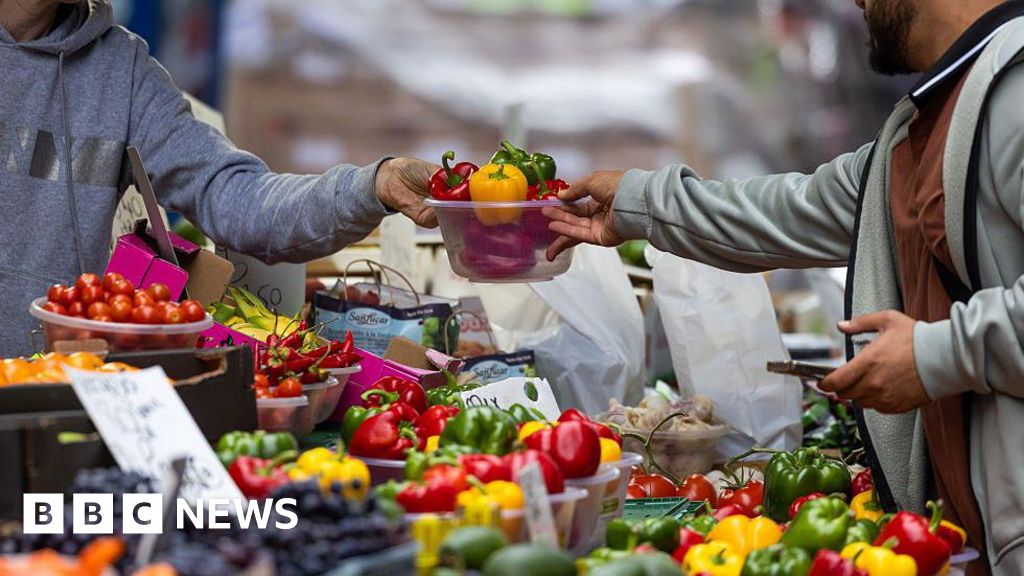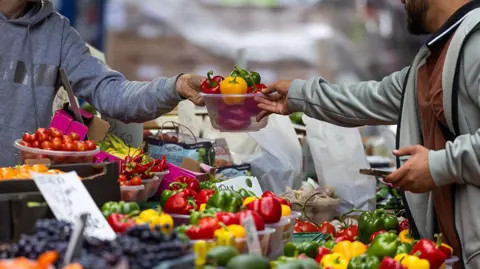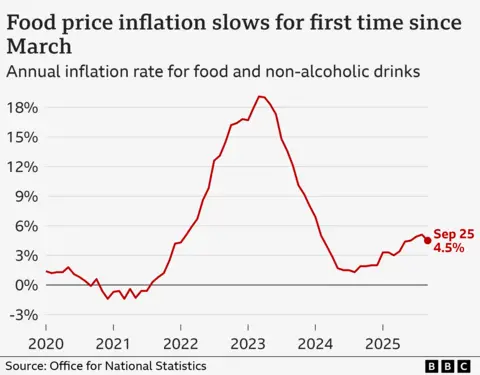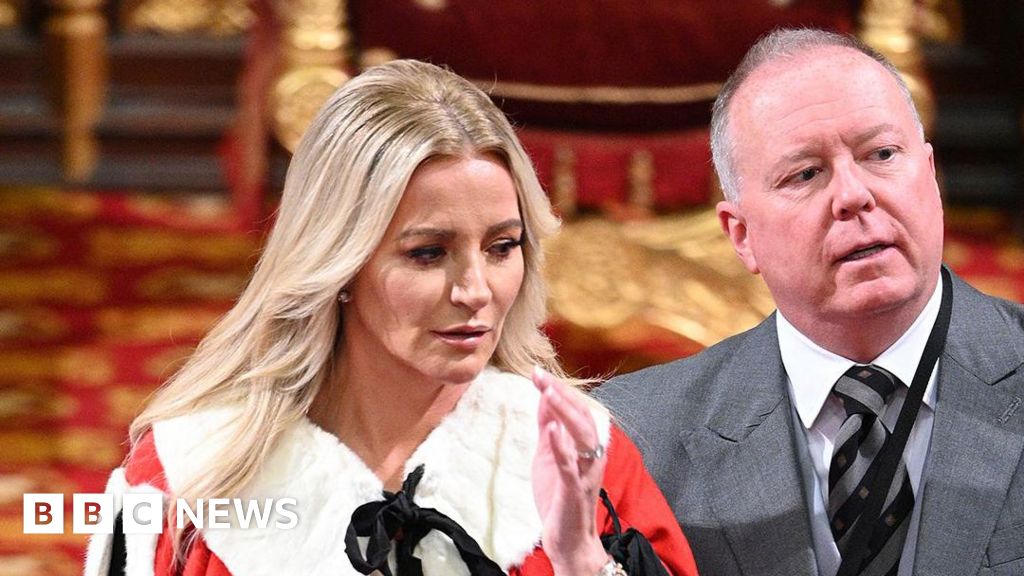Business
US jobs market weakens further in August

The US jobs market weakened further in August, raising new fears about the health of the world’s largest economy.
Employers added just 22,000 jobs last month, fewer than expected, while the unemployment rate ticked up from 4.2% to 4.3%, according to the Labor Department.
The figures cap a string of shaky data this week on the job market and add to the concerns that spiked last month, when the Labor Department said hiring in May and June had been far weaker than it had initially estimated.
On Friday, the department said its latest estimates showed the US actually lost jobs in June, the first such decline since 2020.
Investors, who had already been betting that the US central bank would respond to the weakening labour market with a cut to interest rates at its meeting this month, said that move was now all but certain.
“The warning bell that rang in the labour market a month ago just got louder,” said Olu Sonola, head of US economic research for Fitch Ratings.
US President Donald Trump responded to the signs of slowdown in August by firing the head of the Bureau of Labor Statistics, accusing her, without evidence, of rigging the numbers to make him look bad.
But analysts say the troubles in the job market are partly due to the president’s sweeping changes to tariff and immigration policy, which economists have consistently warned would hurt the economy, by raising costs and uncertainty for firms.
His administration has also cut government spending, firing thousands of government workers.
The Labor Department said the federal government shed 15,000 positions last month. Manufacturing and construction firms also reported payroll declines, offsetting gains in health care.
“Four straight months of manufacturing job losses stand out,” Mr Sonola said. “It’s hard to argue that tariff uncertainty isn’t a key driver of this weakness.”
The number of jobs created each month has been slowing steadily since the boom that followed the reopening from the pandemic.
But analysts have said the economy only needs to create about 50,000 jobs each month to keep up with population growth – far fewer than it once did – as Trump’s crackdown on immigration prompts the stream of new workers that entered the US in recent years to dry up.
Stock markets opened slightly higher following the report, which also showed average hourly pay rising 3.7% over the past year.
In the global bond markets, the rates that investors demand for borrowing dropped sharply, reversing a surge earlier in the week, as confidence grew in a Fed rate cut.
“The initial reaction suggests markets are focused on Fed rate cuts rather than concerns about a cooling economy,” said Ellen Zentner, chief economic Strategist for Morgan Stanley Wealth Management.
“Bad news looks like good news, at least this morning.”
Speaking to broadcaster CNBC, White House economic adviser Kevin Hasset conceded that the August jobs numbers were “disappointing” but said he expected revisions in future months would present a better picture.
Other White House officials pinned the blame on the Federal Reserve and its chairman, Jerome Powell, saying the bank had been too slow to lower interest rates.
“President Trump is implementing the most aggressive pro-growth agenda in our country’s history, but this agenda continues to be held back by Jerome ‘Too Late’ Powell’s foolish refusal to admit that President Trump is right about everything,” White House press secretary Karoline Leavitt said in a statement.
Earlier this week, the government reported that job openings had fallen to the lowest level since 2024, while job seekers outnumbered the posts for the first time since the pandemic.
Claims for unemployment payments also ticked up this week, while Friday’s report put the unemployment rate at the highest level since October 2021, although it is still not far from historic lows.
Business
Debt mutual funds: Rs 1.02 lakh crore outflows in September; liquid & money market funds hit hardest – The Times of India

Fixed-income mutual funds in India witnessed a massive net outflow of Rs 1.02 lakh crore in September 2025, a sharp rise from modest redemptions of Rs 7,980 crore in August, according to data from the Association of Mutual Funds in India (Amfi). The surge was primarily driven by large institutional withdrawals from liquid and money market funds.Out of 16 debt categories, 12 recorded net outflows during the month. Liquid funds saw the steepest outflow at Rs 66,042 crore, followed by money market funds with Rs 17,900 crore, and ultra-short duration funds with Rs 13,606 crore. Low-duration funds also recorded redemptions of Rs 1,253 crore. Short-duration funds faced a relatively modest outflow of Rs 2,173 crore, suggesting that some investors remained anchored to shorter-tenor accrual-oriented products.As per news agency PTI, senior analyst Nehal Meshram from Morningstar Investment Research India explained, “The higher outflow in September was primarily led by large institutional withdrawals from liquid and money market funds, reflecting quarter-end liquidity adjustments and advance tax-related outflows. These categories often used by corporates and institutions for short-term cash management remain highly sensitive to seasonal liquidity cycles.”The large redemptions pulled down the assets under management (AUM) of debt funds by nearly 5 per cent to Rs 17.8 lakh crore at the end of September from Rs 18.71 lakh crore in the preceding month.On the inflow side, overnight funds registered Rs 4,279 crore, dynamic bond funds Rs 519 crore, medium to long-duration funds Rs 103 crore, and long-duration funds Rs 61 crore.Equity mutual funds, in contrast, saw inflows of Rs 30,421 crore in September, a 9 per cent decline from Rs 33,430 crore in August and well below July’s record-high inflow of Rs 42,703 crore, as investors remained cautious amid market volatility and global uncertainties.
Business
Food price rises slow as UK inflation remains at 3.8%

Charlotte EdwardsBusiness reporter, BBC News
 Getty Images
Getty ImagesFood and drinks prices in the UK are increasing at their slowest rate in more than a year, while overall inflation remains unchanged for the third month in a row.
Month-on-month, the cost of food and non-alcoholic drinks actually edged down slightly in September – the first fall since May 2024. The ONS said his was likely to have been driven by increased sales and discounting by retailers.
The UK inflation rate for all items remained stable at a lower-than-expected 3.8% in the year to September, official figures show.
Chancellor Rachel Reeves said she was “not satisfied with the numbers” on inflation, while shadow chancellor Mel Stride said it was “pushing up the cost of living”.
 Elaine Doran/BBC
Elaine Doran/BBCThe inflation rate for food and non-alcoholic drinks was down to 4.5% for the year to September from 5.1% in the year to August.
This means the price shoppers pay for groceries and non-alcoholic drinks is still going up, just more slowly than before.
But between August and September this year, the cost of food and non-alcoholic drinks overall actually fell by 0.2% – the first fall for 16 months.
The drop was driven by slightly cheaper vegetables, milk, cheese and eggs, bread and cereals, fish, mineral waters, soft drinks and juices.
However, the cost of specific items such as red meat and chocolate continued to rise.
Kayleigh Brannan, a mother to baby Hadley, told the BBC she had noticed the price of meat rising in particular, and that now Hadley has started eating solid foods, she expected her expenses would be going up.
“It’s not too bad at the moment but you can see the prices going up,” she said.
She added: “The maternity pay is not enough. You’ve still got the same bills, you’ve still got to pay the mortgage… obviously you have more pressure then.”
Britain’s inflation rate was also 3.8% in July and August, according to the ONS, which is still much higher than the Bank of England’s 2% target.
However, the central bank’s economists had forecast inflation to rise to 4% in September.
ONS chief economist Grant Fitzner said: “The largest upward drivers came from petrol prices and airfares, where the fall in prices eased in comparison to last year.”
He added: “These were offset by lower prices for a range of recreational and cultural purchases including live events.”
Mr Fitzner told BBC Radio 4’s Today programme that food prices were still “running quite high at 4.5%” but added “the fact that we have seen that steady increase dip a little is encouraging.”
“It is just one month’s numbers so we will have to see what transpires in future months – but nonetheless a small glimmer of hope there,” he said.
Paul Dales, chief UK economist for Capital Economics, said while food price inflation could rise further, “this will probably be the peak in inflation”.
James Walton, chief economist at the Institute of Grocery Distribution said the declining rate of food and drink inflation “aligns with our predictions that food inflation will start to moderate, and we may have seen the peak.”
“Whilst this is good news, prices for shoppers are still going up year on year, just more slowly,” he said.
Mr Walton noted that items such as red meat, coffee and chocolate are still seeing strong price increases and linked this to issues with production, such as bad weather.
Danni Hewson, AJ Bell head of financial analysis, said: “Staples like vegetables, milk, cheese and bread were all pared back a touch, though such tiny movements won’t make a huge difference to the overall bill when people reach supermarket tills.”
Dr Kris Hamer, director of insight at the British Retail Consortium, said the figures were “unlikely to raise consumer spirits as the cost of a weekly grocery shop was still “significantly higher than last year”.
“Nonetheless, consumers will have been happy to see the price of key staples such as rice, bread and cereal fall on the month,” he said.

The chancellor said she was “not satisfied with these numbers.”
“For too long, our economy has felt stuck, with people feeling like they are putting in more and getting less out,” Reeves said.
She added that she was determined to ensure the government supports people “struggling with higher bills and the cost of living challenges, deliver economic growth and build an economy that works for, and rewards, working people.”
In a post on X, the shadow chancellor said that inflation running at nearly double the Bank of England’s target was “pushing up the cost of living and punishing those Labour promised to protect”.
Stride claimed national insurance increases, government borrowing and not having “the backbone to reduce spending” were all contributing to inflation.
The overall inflation figure for September matters more than most other months.
That’s because the government usually uses this as the benchmark for the benefits uprating in April.
It means millions of people depending on benefits are likely to see a 3.8% increase in their payments next year.
The state pension will rise by more, because the annual increase for that is determined by the so-called triple lock.
This guarantees that the state pension goes up each year in line with either inflation, wage increases or 2.5% – whichever is the highest. September’s inflation figure of 3.8% is below average earnings for the relevant period (4.8%) which means the rise in wages will decide the state pension increase.
The inflation figures for the past three months were the joint-highest recorded since January 2024, when the rate was 4%, according to the ONS.
Inflation in the UK remains well below the 11.1% figure reached in October 2022, which was the highest rate for 40 years.
Business
India-Germany ties: Piyush Goyal to visit Berlin on 25 years of Strategic Partnership; trade, investment on agenda – The Times of India

Union commerce and industry minister Piyush Goyal will embark on an official visit to Berlin, Germany, from Thursday, marking a milestone in India-Germany engagement, as 2025 commemorates the 25th anniversary of the India–Germany Strategic Partnership. The visit aims to deepen bilateral economic ties and facilitate high-impact interactions with senior officials, industry leaders, and business associations from both countries.During the trip, Goyal will hold bilateral meetings with Katherina Reiche, German federal minister for economic affairs and energy, and Levin Holle, economic and financial policy advisor at the Federal Chancellery and Germany’s G7 and G20 Sherpa. Discussions will focus on enhancing trade and investment cooperation between India and Germany, exploring new avenues for strategic economic partnership.The minister will also engage with Xavier Bettel, deputy Prime Minister and minister of foreign affairs and trade of Luxembourg, to discuss strengthening bilateral trade relations, Luxembourg’s forthcoming State Visit to India, regional developments, and key international issues, as per the ministry statement.As part of his Berlin visit, Goyal will participate as a speaker at the third Berlin Global Dialogue (BGD), an annual summit bringing together leaders from business, government, and academia. He will be a panellist in the session titled “Leaders’ Dialogue: Growing Together – Trade and Alliances in a Changing World,” which will explore strategies for nations and businesses to navigate the evolving global trade landscape and build a sustainable trading ecosystem.A key highlight of the visit will be one-on-one meetings with CEOs of major German companies, including Schaeffler Group, Renk Vehicle Mobility Solutions, Herrenknecht AG, Infineon Technologies AG, Enertrag SE, and Mercedes-Benz Group AG. Goyal will also chair a Roundtable with CEOs and leaders of German Mittelstand companies and meet representatives of the Federation of German Industries (BDI) and the Asia-Pacific Association of German Business.“These interactions will provide a platform to explore synergies, facilitate investments, and promote stronger business-to-business linkages, particularly in sectors aligned with sustainability, innovation, and advanced manufacturing,” the ministry said, underlining that the visit reflects the deepening alignment of strategic priorities between India and its European partners, aiming to translate high-level commitments into sustainable economic partnerships.
-

 Tech6 days ago
Tech6 days agoWhy the F5 Hack Created an ‘Imminent Threat’ for Thousands of Networks
-

 Tech1 week ago
Tech1 week agoWhat Is Google One, and Should You Subscribe?
-

 Tech3 days ago
Tech3 days agoHow to Protect Yourself Against Getting Locked Out of Your Cloud Accounts
-

 Business7 days ago
Business7 days agoBaroness Mone-linked PPE firm misses deadline to pay £122m
-

 Fashion1 week ago
Fashion1 week agoSelf-Portrait unveils high-profile Apple Martin campaign
-

 Politics1 week ago
Politics1 week agoTears, cheers as Palestinians welcome freed prisoners home under Gaza ceasefire
-

 Tech1 week ago
Tech1 week agoWIRED’S Favorite PC Monitor Is $75 Off
-

 Sports1 week ago
Sports1 week agoBrewers player ripped for avoiding hit-by-pitch that would have tied game: ‘All he had to do was stand there’






